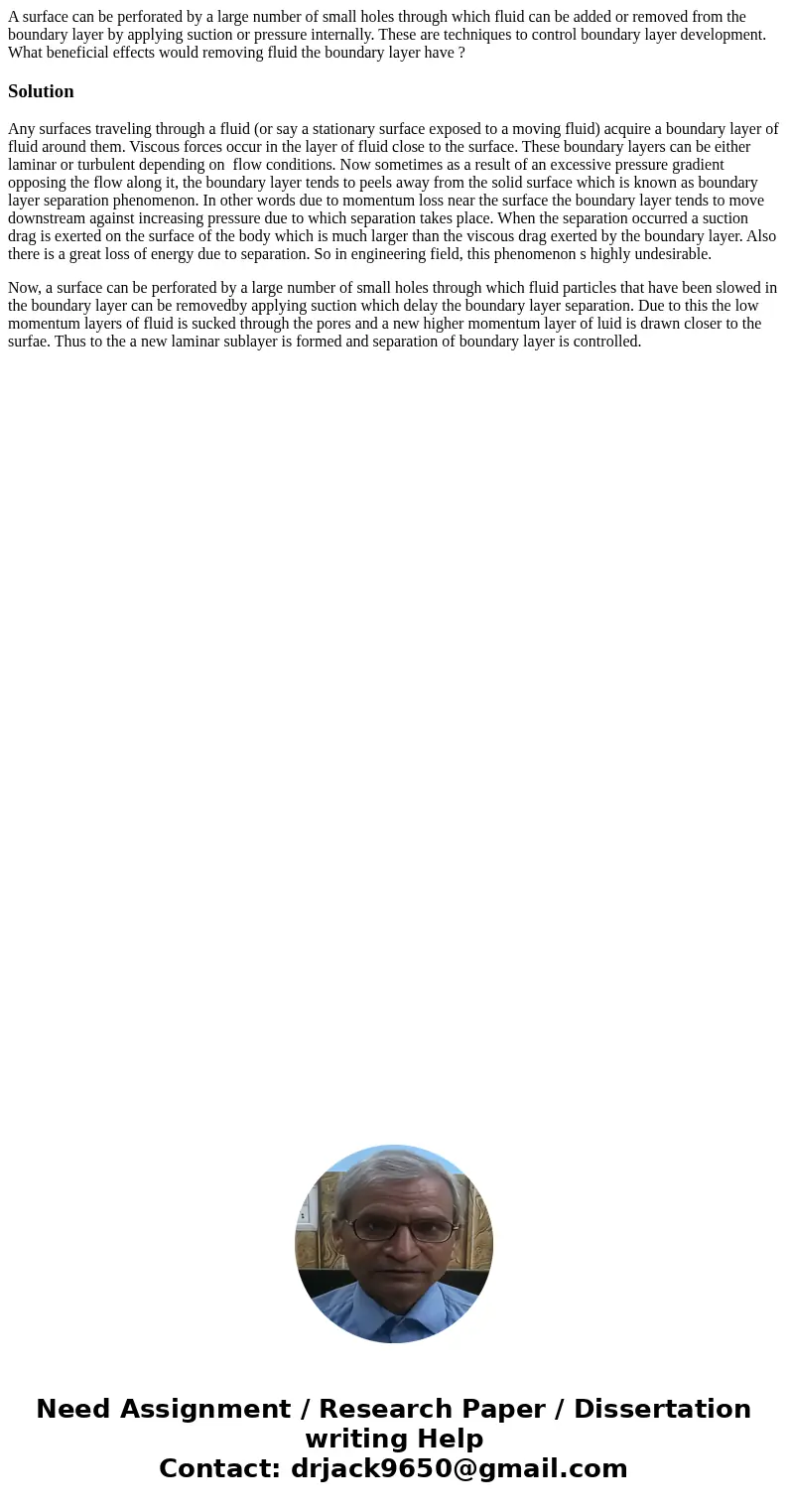A surface can be perforated by a large number of small holes
Solution
Any surfaces traveling through a fluid (or say a stationary surface exposed to a moving fluid) acquire a boundary layer of fluid around them. Viscous forces occur in the layer of fluid close to the surface. These boundary layers can be either laminar or turbulent depending on flow conditions. Now sometimes as a result of an excessive pressure gradient opposing the flow along it, the boundary layer tends to peels away from the solid surface which is known as boundary layer separation phenomenon. In other words due to momentum loss near the surface the boundary layer tends to move downstream against increasing pressure due to which separation takes place. When the separation occurred a suction drag is exerted on the surface of the body which is much larger than the viscous drag exerted by the boundary layer. Also there is a great loss of energy due to separation. So in engineering field, this phenomenon s highly undesirable.
Now, a surface can be perforated by a large number of small holes through which fluid particles that have been slowed in the boundary layer can be removedby applying suction which delay the boundary layer separation. Due to this the low momentum layers of fluid is sucked through the pores and a new higher momentum layer of luid is drawn closer to the surfae. Thus to the a new laminar sublayer is formed and separation of boundary layer is controlled.

 Homework Sourse
Homework Sourse